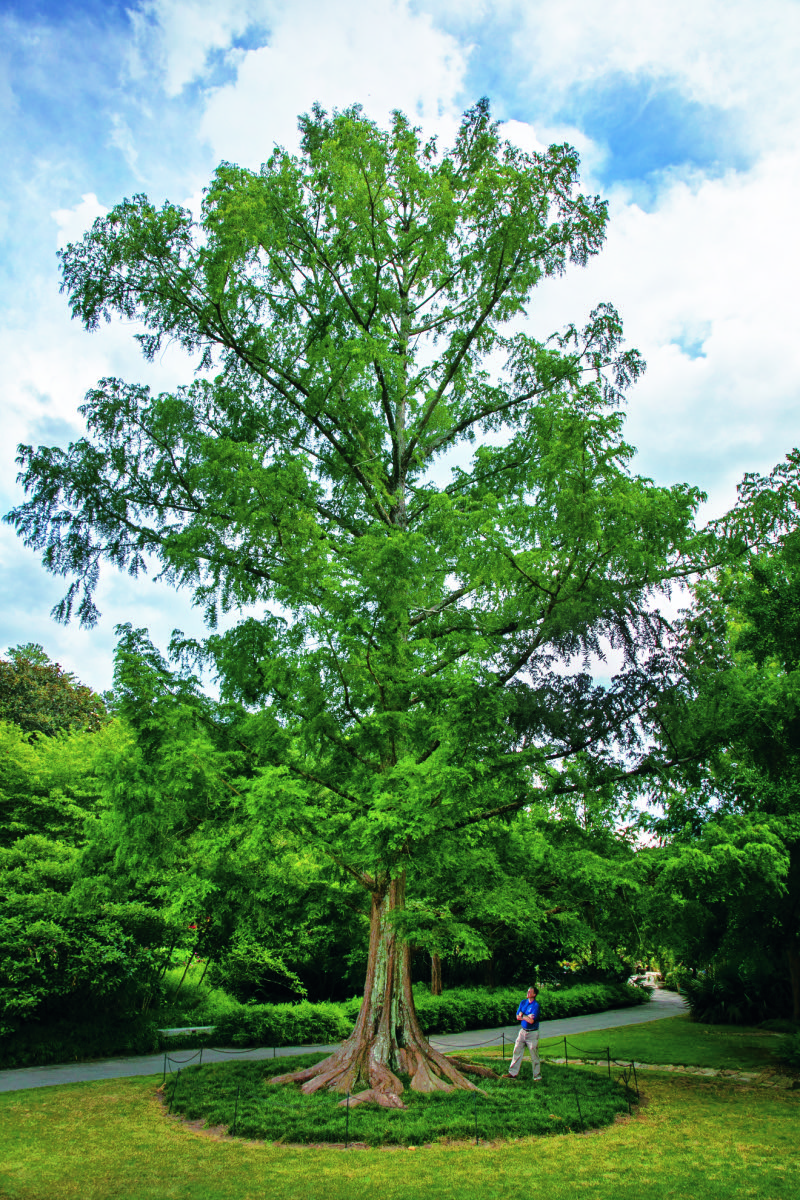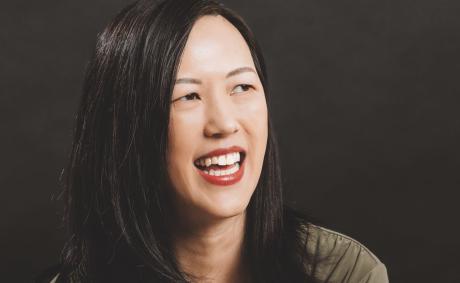You remember the classic Shel Silverstein book The Giving Tree. Boy loves tree, tree loves boy. Boy grows up, moving from climbing and swinging to sawing and building, taking more and more from the tree until it ends with the boy returning as an old man to sit on the stump that is all that’s left. Originally perceived as a happy ending, the book is now seen as something of a cautionary tale, not just about trees but about boundaries.
At Duke Gardens they take much better care of their trees, and a current volunteer has a story that is almost the opposite of Silverstein’s — call it the Tree Giver.
If you’ve seen the Dawn Redwood in Duke Gardens you know that trees do, in a way, come back from the dead. The gardens’ Dawn Redwood, Metasequoia glyptostroboides, is an unusual redwood for two reasons. First, it is a deciduous conifer: it drops its needles, like a bald cypress, whereas most conifers are evergreen. More important, though the Dawn Redwood was one of the most widespread species in the northern hemisphere during the Tertiary period, it was long thought to have gone extinct sometime after the end of that period, around 2.6 million years ago.
“It was actually given its name from a fossil, in the 1930s,” says Paul Jones, curator of the W.L. Culberson Asiatic Arboretum in the gardens.
It was actually given its name from a
—Curator Paul Jones
fossil, in the 1930s
That was until 1944, when a Chinese botanist found a few specimens still growing in its native range in China. “When word got out, especially to some scientists at Harvard,” Jones says, a young Chinese botanist was commissioned to gather some seeds.
Scientists at Harvard then propagated the seeds, and hundreds of thousands grew into enormous trees all over the nation, including one in the gardens. That tree even has a plaque telling the story, which got volunteer Heidi Wilson thinking. “That’s interesting,” she said. “My husband is doing the same thing with chestnuts.”
Heidi’s husband, Brad Wilson, also volunteers at the gardens. The pair moved to the Triangle to be near their children when they retired, and the gardens turned out to be a great place to volunteer. Heidi loves talking with visitors, and Brad does woodworking, maintaining the gardens’ crop of natural wooden benches. Brad also likes to garden, and the Dawn Redwood isn’t the only tree that’s come back to life.
We are referring, of course, to the American chestnut, virtually destroyed in the first half of the 20th century by the chestnut blight, a fungus that killed billions of chestnuts in North and South America and Europe. It was introduced when Japanese chestnuts were imported, bringing with them the pathogen, to which they were immune. The American trees had no immunity and were devastated; Europe was also badly hit. Even today, chestnut stumps in Eastern forests put out shoots that grow for years, then succumb.
But over the years botanists and other scientists have crossbred American chestnuts with immune Asian varieties, often starting with the occasional blight-resistant American tree. Like, for example, the one Brad Wilson grew up near in Wheeling, West Virginia.
“It was a big tree, branchy,” he recalls, and he loved it. His family also had a rocking chair made from chestnut, “and I just liked the chestnut rocker.”
Before moving to their new home in Durham, Wilson heard about the availability of some chestnut seedlings grown by the Chestnut Hill Nursery, descendants of what is called the Dunstan Chestnut, a blight-resistant chestnut crossbred in Greensboro in the 1950s by one Dr. Robert Dunstan T’1921. He acquired a few seedlings and planted some in his yard. Squirrels liked those, but the ones he potted and kept on his screened porch grew with vigor, and those moved down with him to the Triangle.
He mentioned them to Jones as he volunteered, and the gardens thus gratefully accepted two bushy chestnut saplings, which sat in the greenhouse until this spring. One has been planted in the Asiatic Arboretum, to recognize the contribution of its Asiatic cross-breeding, and one awaits planting in the H.L. Blomquist Garden of Native Plants. Durham lies on the eastern edge of the chestnut’s native range, says Jones, “but I’ve seen evidence in Orange County of old trees,” so he has high hopes for them.
Wilson is glad to contribute to the garden, but “I did this largely because they’re huge, wonderful trees and I thought it would be great for my kids and grandkids
to see them.” As for that original chestnut he saw growing up? That, he saw regrettably on a visit, has been cut down. “That sounds criminal,” Jones says.
As for the new ones: “You’ll be reading your iPad under them” someday, Wilson predicts. Call Wilson’s chestnuts the giving back trees.




